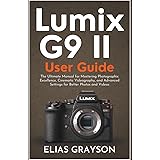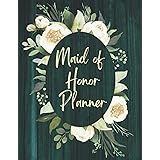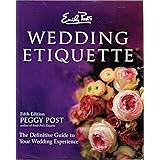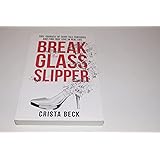Event planning is a complex endeavor, with industry data frequently citing budget overruns as a top challenge. Successfully executing a memorable event requires more than just enthusiasm; it demands strategic foresight and creative problem-solving. As we’ve seen in the insightful video featuring NYC’s top event planner, Jove Myers, achieving a high-impact celebration on any budget is entirely within reach, provided you master the foundational elements and embrace innovative design choices.
Myers emphasizes three critical pillars for successful event planning: guest count, budget, and location/season. These factors are intrinsically linked, each profoundly influencing the others. A meticulous approach to these initial considerations forms the bedrock of an event that not only delights guests but also respects financial parameters.
Mastering Foundational Event Planning Strategies
The initial phase of event planning dictates the entire trajectory of your celebration. Precision in defining key parameters prevents costly mid-planning adjustments and ensures a cohesive vision.
Accurate Guest Count: The Cornerstone of Capacity and Cost
Determining your guest count early is paramount. This single figure directly impacts everything from venue size and catering quantities to staffing needs and even the number of centerpieces required. Overestimating can lead to wasted resources, while underestimating risks logistical nightmares and a less-than-optimal guest experience.
An expert planner considers not just the total number but also the guest profile. Are they mostly couples, families with children, or corporate colleagues? Understanding your attendees helps tailor the event experience, from menu selection to entertainment, ensuring a more personalized and successful outcome.
Strategic Budget Allocation: Maximizing Value
A realistic budget is not merely a number; it’s a strategic allocation tool. Event budgets are typically broken down into core categories: venue, catering, decor, entertainment, and miscellaneous. Myers wisely notes that the guest count heavily influences this budget, as does the choice of venue.
Allocate funds where they will have the most significant impact on the guest experience. Sometimes, investing more in an exceptional catering experience or unique entertainment provides greater perceived value than excessive floral arrangements. Flexibility within your budget allows for pivot points if unexpected costs arise or opportunities for significant savings present themselves.
Venue and Season Selection: Impacting Ambiance and Logistics
The choice of venue, particularly in a dynamic city like New York, is a pivotal decision. Myers highlights the allure of unique, empty spaces but also cautions about the hidden costs of “bringing everything in.” While a blank canvas offers unparalleled creative freedom, it often necessitates extensive rentals for seating, tables, kitchen equipment, and even basic infrastructure like power and restrooms.
Conversely, a restaurant venue can be a highly cost-effective solution for intimate events. It inherently provides much of the infrastructure—tables, chairs, flatware, glassware, and trained staff—along with a pre-existing ambiance. The season also plays a critical role; outdoor events require weather contingency plans, while peak seasons can inflate vendor prices and reduce availability, influencing both budget and location choices.
Designing an Unforgettable Ambiance and Experience
Beyond the logistics, the aesthetic and experiential elements are what transform a gathering into a true celebration. Thoughtful design choices, often leveraging cost-effective options, can elevate the entire event.
Embracing Color for Emotional Impact
Color is a powerful tool for setting the mood and energy of an event. Myers enthusiastically champions the embrace of color, recognizing its emotive power to evoke fun and high energy. Moving beyond monochromatic palettes allows for a vibrant, personalized expression that immediately captivates guests.
Consider a bold color scheme that reflects the event’s purpose or the host’s personality. This doesn’t mean every element must be brightly hued, but strategic pops of color through linens, floral arrangements, or even lighting can make a dramatic difference. Color psychology suggests that warm tones like reds and oranges can stimulate conversation and appetite, while cool blues and greens can create a calming, sophisticated atmosphere.
Strategic Decor: High-Low Design with Depth
Achieving visual richness often comes down to playing with dimensions rather than sheer expense. Myers’s advice to buy candles “high and low” to create shape, size, and texture is a masterclass in this concept. This layered approach adds depth and visual interest to tabletops and other display areas, transforming simple elements into sophisticated vignettes.
This principle extends beyond candles. Incorporating varying heights with floral arrangements, using different textures in linens, or mixing vintage and modern elements all contribute to a dynamic and engaging visual landscape. The goal is to create a multi-dimensional experience that draws the eye and encourages interaction.
The Resurgence of the Carnation
The “flower of the moment” that is both affordable and making a comeback is the carnation. Once relegated to filler status, the humble carnation, especially in monochromatic groupings, offers incredible bang for your buck. Its ruffled petals and wide array of colors allow for stunning, voluminous arrangements without the prohibitive cost of more exotic blooms.
Consider massing carnations in single colors for a modern, impactful statement. Grouping them tightly in various vases, or creating large, spherical arrangements, can create significant “wow” moments. This choice demonstrates an understanding of value without sacrificing aesthetic appeal.
Personalized Touches: Envelopes and Fortunes
Small details often leave the biggest impressions. Myers’s recommendation for using envelopes as place cards is a brilliant example of a simple, cost-effective idea with high impact. These can be laid flat or propped up for added height, instantly elevating a tabletop.
The idea of inserting a note or “fortune” inside the envelope takes personalization a step further. This unexpected surprise provides a delightful moment of interaction for guests, offering uplifting messages or even conversation starters. Such thoughtful touches demonstrate genuine care and transform a functional item into an interactive experience, creating lasting memories for each attendee.
Optimizing the Guest Experience: Food and Beverage Excellence
Hospitality at its core revolves around providing exceptional food and beverage service. Smart strategies ensure guests are well-cared for while allowing the host to enjoy their own party.
The Interactive Cocktail Bar: Garnishes Galore
Alcohol often constitutes a significant portion of an event budget, making its presentation and service crucial. Myers suggests a beautiful bar with an abundance of garnishes, empowering guests to “feel like they make cocktails.” This interactive approach not only enhances the guest experience but also subtly reduces the need for extensive mixology staff.
Offer a curated selection of spirits, mixers, and a wide array of fresh garnishes: citrus slices, berries, herbs like mint and rosemary, exotic spices, and unique bitters. This “build-your-own” cocktail station fosters creativity and conversation, turning a simple drink into a personalized masterpiece. It’s a sophisticated twist on self-service that elevates the entire beverage program.
Food Stations: Effortless Elegance for the Host
A key to successful hosting is the ability to enjoy your own event without being tethered to serving duties. Food stations are an elegant and efficient solution. As Myers notes, they allow for extensive preparation in advance, enabling guests to serve themselves at their leisure.
Stations can be themed around a cuisine (e.g., Italian pasta bar, Mexican taco station), a type of food (e.g., charcuterie and cheese, dessert bar), or even a cooking method (e.g., carving station). This method encourages guests to circulate, mingle, and revisit dishes, enhancing the social dynamic of the event. It also offers a less formal, yet still refined, dining experience compared to a plated meal, allowing for greater variety and flow.
Ultimately, the most successful events, regardless of scale, reflect the unique personality of the host. Infusing your celebration with your “stamp” ensures authenticity and genuine happiness, which is undeniably contagious among your friends and guests. This thoughtful approach to event planning elevates the entire occasion, leaving a lasting impression and ensuring a truly memorable experience.











